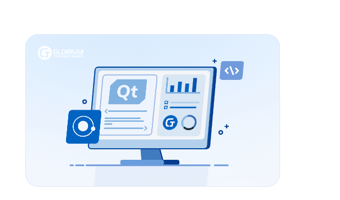In today's rapidly evolving healthcare landscape, technology plays an increasingly pivotal role,...
Mobile App Backend Development: A Comprehensive Guide
Introduction
In the rapidly evolving world of mobile app development, the backend plays a crucial role in ensuring the seamless functioning of applications. Mobile app backend development involves the creation and management of the server-side components that power your app. In this guide, we'll delve into the intricacies of mobile app backend development, covering everything from its significance to essential practices and frequently asked questions.
Mobile App Backend Development: What Is It?
Mobile app backend development refers to the process of designing, building, and maintaining the server-side infrastructure that supports a mobile application. It involves creating APIs, databases, authentication systems, and more to ensure that the app's frontend and backend work harmoniously. An efficient backend enables features like user authentication, data storage, real-time updates, and integration with third-party services.
The Importance of a Robust Backend
A well-structured backend is the backbone of a successful mobile app. Here's why it matters:
- Data Management: The backend handles data storage, retrieval, and manipulation, ensuring that users can access and interact with their data seamlessly.
- Scalability: A well-designed backend can accommodate a growing user base without compromising performance, ensuring a positive user experience.
- Security: Backend systems implement security measures to protect user data and prevent unauthorized access.
- User Experience: Backend functionalities like push notifications and real-time updates enhance the overall user experience.
- Third-party Integrations: Backend development allows integration with external services, such as payment gateways and social media platforms, expanding app capabilities.
Key Components of Mobile App Backend Development
APIs and Endpoints
APIs (Application Programming Interfaces) serve as bridges between the frontend and backend of an app. They define how different components of the app can communicate with each other and with external services. Endpoints are specific URLs that API requests are sent to, facilitating actions like retrieving data or updating information.
Databases
Databases store and manage the app's data, such as user profiles, content, and settings. Common types include relational databases (e.g., MySQL) and NoSQL databases (e.g., MongoDB), each suited for different data structures and needs.
Authentication and Authorization
User authentication ensures that only authorized users can access the app, enhancing security. Authorization determines what actions users are allowed to perform within the app, preventing unauthorized activities.
Cloud Services
Cloud services offer scalable and flexible solutions for backend needs. They provide storage, computing power, and other resources, reducing the need for maintaining physical servers.
Best Practices for Effective Backend Development
-
Design for Scalability: Plan for the app's growth by building a backend that can handle increased traffic and data.
-
Optimize for Performance: Efficient backend code and database queries lead to faster app response times.
-
Security First: Implement robust security measures, including encryption and secure authentication methods, to protect user data.
-
Use Caching: Caching frequently accessed data reduces the load on the backend, improving app speed.
-
Regular Updates: Keep the backend updated with the latest security patches and improvements.
-
Test Thoroughly: Rigorous testing ensures that the backend functions as expected and minimizes the risk of bugs.
FAQs
Q: What is the role of backend development in app responsiveness? A: Backend development influences app responsiveness by optimizing data retrieval, processing, and communication between the frontend and backend. A well-designed backend contributes to faster load times and smoother interactions.
Q: Can I change the backend of my existing app? A: Yes, it's possible to update or replace the backend of an existing app. However, this process requires careful planning and execution to ensure a seamless transition without disrupting user experience.
Q: Which programming languages are commonly used for backend development? A: Popular backend programming languages include Python, Ruby, Java, and Node.js. The choice depends on factors like project requirements and developer expertise.
Q: What role does the cloud play in backend development? A: Cloud services provide scalable resources, reducing the need for managing physical servers. They offer storage, computing power, and infrastructure, making backend development more efficient.
Q: How does backend development impact app security? A: Backend development directly affects app security by implementing encryption, authentication mechanisms, and user authorization. A secure backend protects user data from unauthorized access.
Q: What's the relationship between frontend and backend development? A: Frontend development focuses on creating the user interface and user experience, while backend development handles the server-side infrastructure that powers the app's functionality.
Conclusion
Mobile app backend development is the backbone of a successful application, ensuring seamless data management, user experience, and security. By following best practices and understanding the key components, developers can create efficient and reliable backend systems that contribute to the overall success of their mobile apps.

